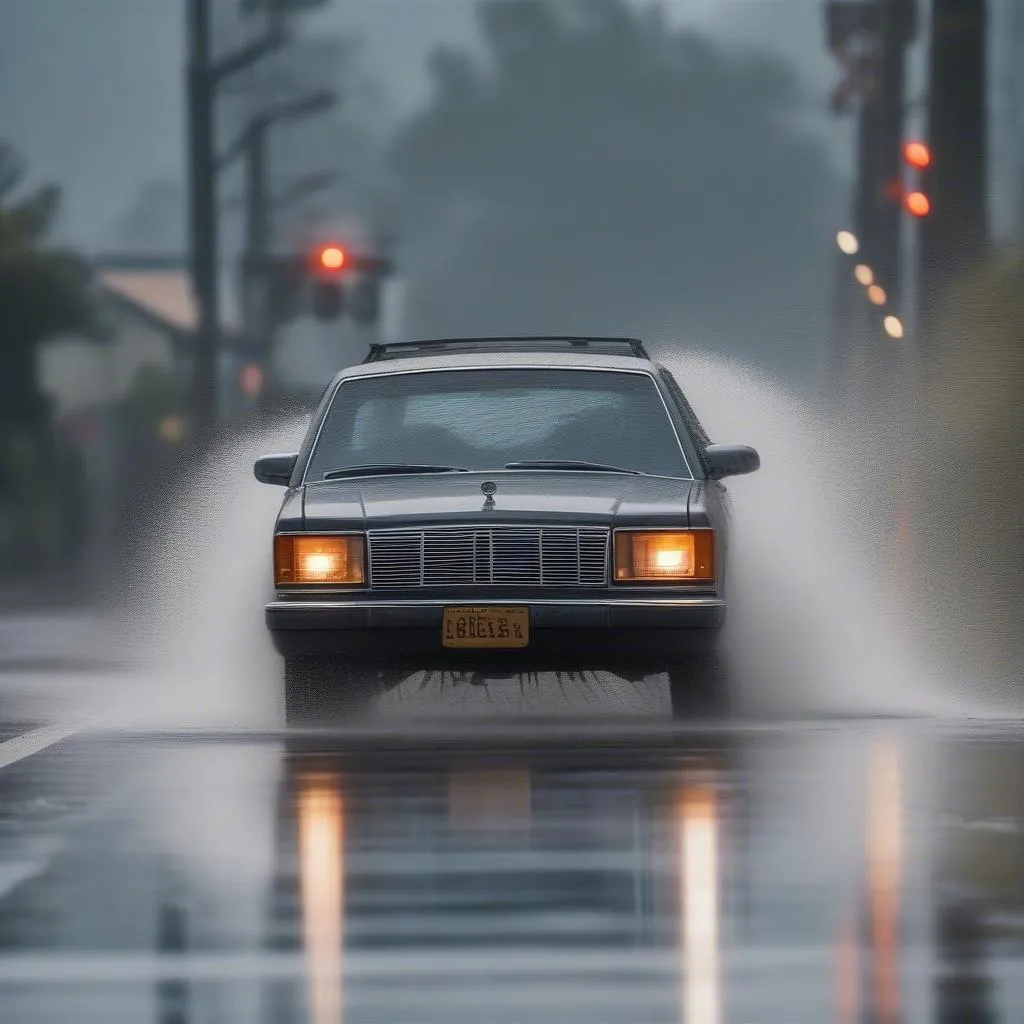Driving can be a joy, offering freedom and the chance to explore new places, like the scenic coastal roads of California’s Highway 1 or the winding mountain passes of the Alps. But, just like any journey, it comes with its own set of challenges. And one of the biggest hurdles any driver can face is navigating wet and slick roads.
Whether it’s a sudden downpour on a summer afternoon or icy conditions in the heart of winter, losing grip on the road can turn a pleasant drive into a stressful situation. It’s not just about your own safety, but also the safety of your passengers and others sharing the road.
Understanding the Dangers of Wet and Slick Roads
When rain falls or ice forms, it creates a layer between your tires and the road surface, significantly reducing traction. This makes it harder to control your vehicle, especially when braking, accelerating, or turning.
Let’s break down the risks:
- Reduced Traction: This is the primary danger. Imagine trying to stop your car on a wet surface – it’s like trying to run on ice. Your stopping distance increases dramatically.
- Hydroplaning: This occurs when your tires lose contact with the road surface and ride on top of a layer of water. It can feel like your car is suddenly floating, and steering becomes ineffective.
- Skidding: Losing control and skidding is a terrifying experience. On wet or slick roads, it’s easier for your car to lose traction and spin out of control.
These risks increase exponentially if you’re driving at high speeds, neglecting tire maintenance, or ignoring the basic rules of driving in adverse conditions.
Tips for Driving Safely on Wet and Slick Surfaces
Driving safely on wet and slick roads is all about adapting your driving habits and being extra cautious. Here’s a guide to help you navigate these conditions like a pro:
Before You Drive:
- Check Your Tires: Just like a good pair of hiking boots are essential for a mountain trek, your tires are your lifeline on wet roads. Ensure they have sufficient tread depth and are properly inflated.
- Plan Your Route: Check the weather forecast and consider postponing your trip if heavy rain or icy conditions are expected. If you must drive, choose well-maintained roads and allow extra travel time.
While Driving:
- Reduce Speed: This is crucial. The faster you drive, the less control you have, especially on slippery surfaces.
- Increase Following Distance: Give yourself more space between your car and the vehicle in front of you. This allows for longer braking distances.
- Avoid Sudden Movements: Avoid harsh braking, rapid acceleration, or sharp turns. These actions can cause your car to lose traction.
- Use Headlights: Turn on your headlights even in light rain or snow to increase visibility.
- Be Aware of Hydroplaning: If your car starts to hydroplane, don’t panic. Ease off the accelerator, steer in the direction you want to go, and avoid slamming on the brakes.
- Stay Focused: Distracted driving is dangerous in any conditions, but even more so on wet roads. Put away your phone and focus on the road.
Additional Tips for Driving in Ice and Snow:
- Consider Winter Tires: If you live in an area with frequent snow or ice, investing in winter tires can significantly improve traction and safety.
- Carry Emergency Supplies: Pack a winter car kit with blankets, a flashlight, food, and water in case of emergencies.
** Hydroplaning Car**
Hydroplaning Car**
What to Do if You Skid
Skidding can be a frightening experience, but knowing how to react can help you regain control:
- Stay calm and don’t panic.
- Ease off the accelerator.
- Steer in the direction you want the car to go (steer into the skid).
- Avoid slamming on the brakes.
Planning a Trip? Consider the Elements
Just as a seasoned traveler consults a compass and maps before embarking on a journey, understanding the potential impact of weather on your driving conditions is crucial for a safe and enjoyable trip.
- Mountain Roads: If you’re planning a scenic drive through mountainous regions, be mindful of changing weather patterns. Rain can quickly turn to snow or ice at higher altitudes, so check road conditions and pack accordingly.
- Coastal Drives: While a drive along the coast offers breathtaking views, be aware of strong winds and potential for slippery roads due to sea spray.
** Mountain Road with Snow**
Mountain Road with Snow**
FAQs about Driving on Wet and Slick Roads
Q: How much longer does it take to stop on a wet road?
A: It takes at least twice as long to stop on a wet road compared to a dry road.
Q: What should I do if I encounter a flooded road?
A: It’s best to turn around and find an alternate route. Driving through floodwater is extremely dangerous as you can’t judge the depth or potential hazards hidden beneath the surface.
Q: How can I improve my visibility in heavy rain?
A: Make sure your windshield wipers are in good condition and use your low beam headlights to increase your visibility to other drivers.
Driving with Confidence: It’s About Preparation and Awareness
Navigating wet and slick roads safely is about more than just reacting to changing conditions; it’s about proactive planning and adapting your driving style. By understanding the risks, following these essential tips, and staying informed about weather conditions, you can confidently embark on any journey, rain or shine.
For more tips and resources on safe driving, visit travelcar.edu.vn, your trusted source for all things travel and automotive.
** Car with Winter Tires**
Car with Winter Tires**